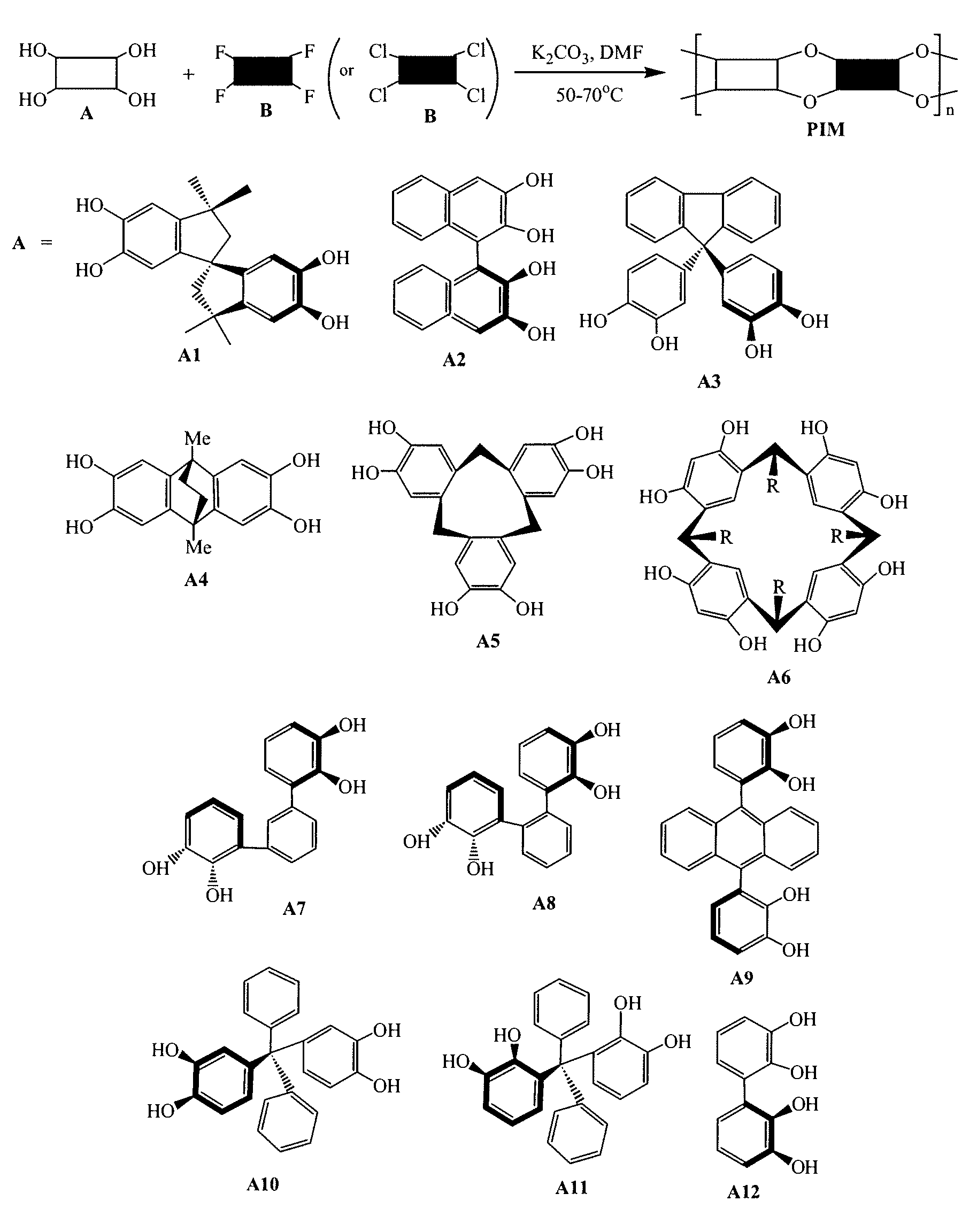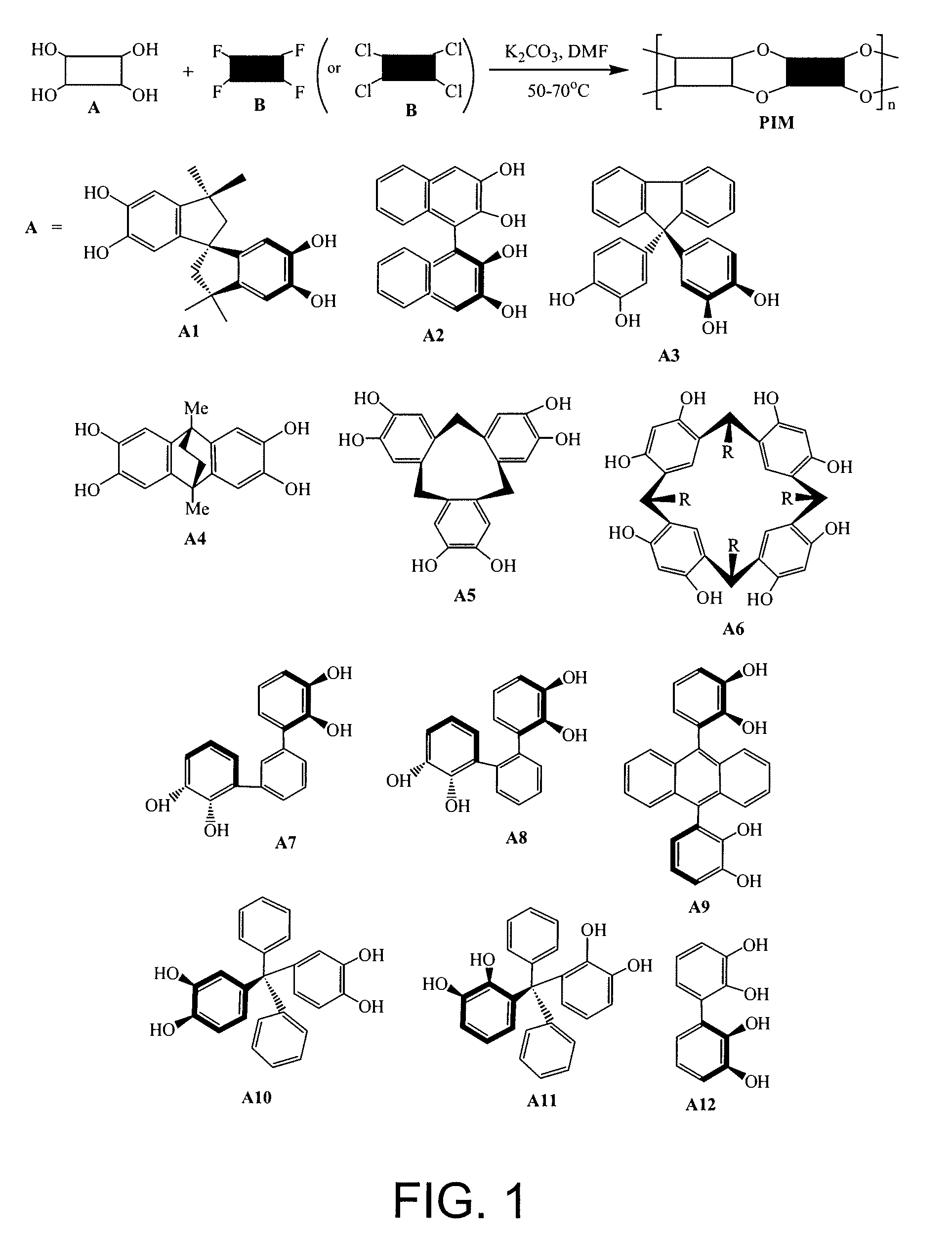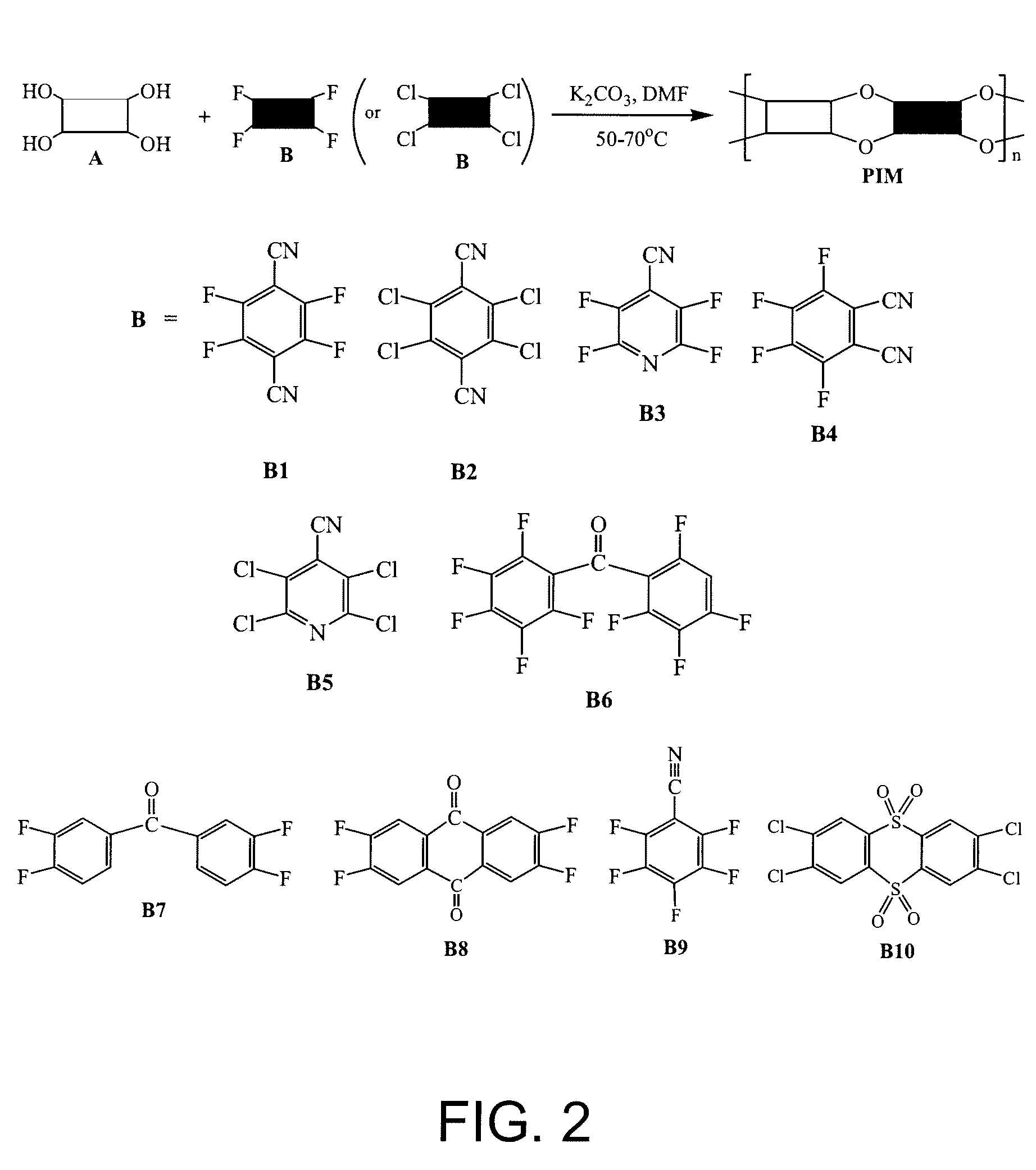UV-cross-linked membranes from polymers of intrinsic microporosity for liquid separations
a technology of intrinsic microporosity and cross-linked membranes, which is applied in the direction of membranes, membrane technology, separation processes, etc., can solve the problems of ca membranes, polymers which are more permeable are generally less selective, and various polymers and techniques have been used without much success, etc., to achieve high selectivity, good solubility, and high chemical and thermal stability
- Summary
- Abstract
- Description
- Claims
- Application Information
AI Technical Summary
Benefits of technology
Problems solved by technology
Method used
Image
Examples
Embodiment Construction
[0025]Current polymeric membrane materials have reached a limit in their productivity-selectivity trade-off relationship for separations. In addition, gas separation processes based on glassy solution-diffusion membranes frequently suffer from plasticization of the stiff polymer matrix by the sorbed penetrant molecules such as CO2 or C3H6. Plasticization of the polymer represented by swelling of the membrane structure and significant increase in the permeability of all components in the feed occurs above the plasticization pressure when the feed gas mixture contains condensable gases.
[0026]Methods for stabilizing the polymeric membranes include either annealing or cross-linking. Polymeric membrane cross-linking methods include thermal treatment, chemical cross-linking, UV-photochemical cross-linking, and blending with other polymers.
[0027]This invention pertains to high performance UV-cross-linked membranes from polymers of intrinsic microporosity (PIMs) and methods of making them. ...
PUM
| Property | Measurement | Unit |
|---|---|---|
| size | aaaaa | aaaaa |
| temperature | aaaaa | aaaaa |
| thick | aaaaa | aaaaa |
Abstract
Description
Claims
Application Information
 Login to View More
Login to View More - R&D
- Intellectual Property
- Life Sciences
- Materials
- Tech Scout
- Unparalleled Data Quality
- Higher Quality Content
- 60% Fewer Hallucinations
Browse by: Latest US Patents, China's latest patents, Technical Efficacy Thesaurus, Application Domain, Technology Topic, Popular Technical Reports.
© 2025 PatSnap. All rights reserved.Legal|Privacy policy|Modern Slavery Act Transparency Statement|Sitemap|About US| Contact US: help@patsnap.com



